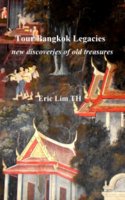| Back to Back Issues Page |
 |
|
Bangkok Travelbug October 14 Old markets in Nakhon Pathom September 25, 2014 |
| Hello
The Tha Chin River The Tha Chin is a tributary of the Chao Phraya that branches off from Chainat province 180 km to the north. The river flows past Suphanburi, Nakhon Pathom, out to the Gulf of Thailand at Samut Sakhon. In the old days many Chinese trading ships would berth at the estuary of the river. For this reason the area around the estuary was called Tha Chin (Chinese port) . As a result the river was named Tha Chin as well. There are a few old markets on the banks of the Tha Chin in Nakhon Pathom. These are markets where the people live upstairs and conduct their businesses in shops downstairs. They form communities that have preserved the traditional way of life that’s more than 100 years old. Table of contents Bang Luang Market The Bang Luang Market is located in Tambon Bang Luang, Amphoe Bang Len about 80 km from Bangkok. You’ll pass the Wat Lam Phaya floating market to get there. The Thai letters and numerals RS 122 are written after the name of the market. RS mean Rattanakosin Sok or the Rattanakosin Era. This is the old Thai calendar in which years are counted from 1782 AD the year Bangkok was founded. Hence the date after the name of the market is 1904 AD, 122 years after Bangkok was founded. Chinese immigrants of the Teochew dialect group from southern China came to old Siam in large numbers during the 1800’s to flee from wars and other natural disasters. Some of them settled in Bang Luang and made their living in three ways; as traders, abattoir workers and rice farmers. In the early years they lived in simple lodgings with thatched roofs. The famous Thai poet Sunthorn Phu wrote a poem on Bang Luang in 1842. Later in the reign of King Rama V (1868 – 1910), the community got prosperous and the current buildings were built. That could account for the year listed after the name of the market. The market consists of two streets lined by two-storey wooden buildings. Our first stop was a small shop that was a metal foundry. The shop also had a museum! 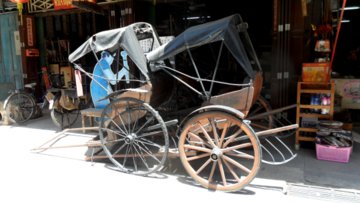
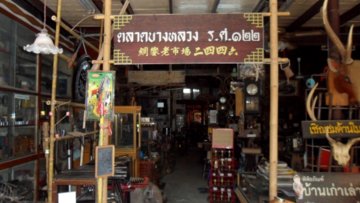
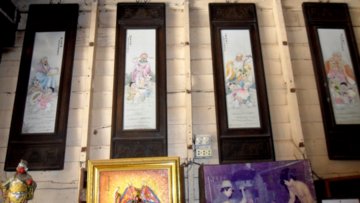
The founder of this metal shop Chong Ni Yok was born in Tai Po, Guangzhou in 1887 to a family practising martial arts and traditional Chinese medicine. As a young man Chong migrated to Siam and initially practised Chinese medicine. However he soon got tired of his job and moved on. 
Chong Ni Yok Chong eventually settled in Bang Luang and started this foundry to make metal tools for the carpenters and farmers in the area. The business prospered and as Chong didn’t have a son, his two daughters continued with the metal foundry. 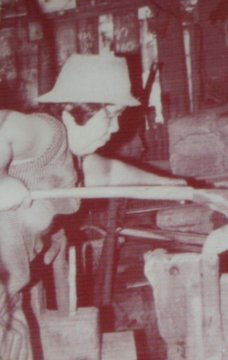
Chong’s daughter, Payong Chong died in Bang Luang in 1957. His descendants still run this metal shop today. The Ban Luang Market was rather quiet for a Saturday afternoon. Several shops in the second street were shuttered up during our visit. 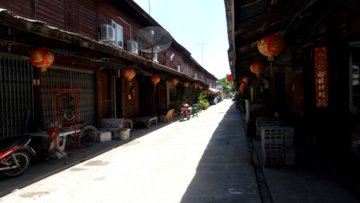
Quiet section of the market 
Chinese opera of old Just imagine what life was like in the old days. The shops that were opened sell a variety of goods. 


Down by the river there were pontoons where visitors can have their food. An enterprising boat vendor turned up to serve diners on the pontoons. 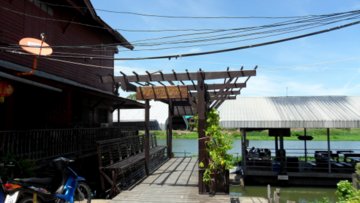
The floating dining area 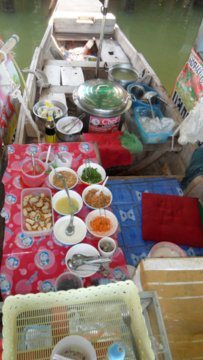
The solitary boat vendor We stopped for a coffee at this quaint old coffee shop. It’s hard to imagine what Bang Luang would be like in future. Reviving old communities like these while still preserving the traditional image would indeed to a challenge. 
Traditional coffee shop Table of contents Tha Na Market The Tha Na Market is on the way to Nakhon Pathom city about 45 km from Bangkok. The market was started in the reign of King Rama I (1782 – 1809) as a fresh market for the produce in the area. The wooden two-storey buildings were built later in the reign King Rama V (1868 – 1910). 
Buildings in Tha Na Market The market got its name because of a pier in the old days that served to transport the rice from the surrounding rice fields (tha na - rice field pier) . The first stall we encountered was selling a fruit juice that looked like orange juice, tasted like orange juice though much sweeter. I had my doubts when saw the spikes on the rind of the fruit! It’s called fak kao in Thai, a species a species of the Momodica plant. 
A cool and refreshing drink The Tha Na Market is famous for her fruits, pomelo, local snacks and antique shops. It’s a little livelier than the Bang Luang Market with neat and tidy shops where visitors can shop, browse or sit down for a drink. 
Signature product of Tha Na Market What struck me during the visit was the wide variety of snacks available in this market. 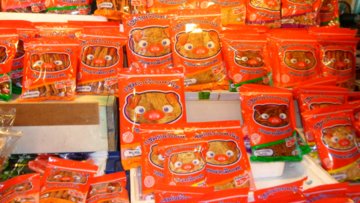



It wasn’t that crowded for a Saturday afternoon either and we had a very pleasant walk through this old market. There is an antique shop selling old dining tables and chairs, chandeliers and paintings. I wonder how people actually buy these things today. 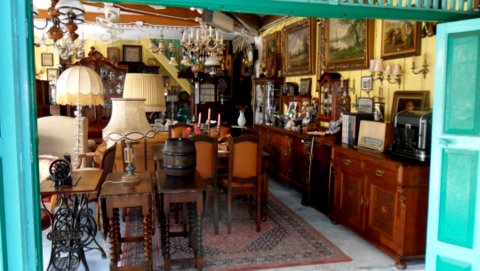
Antiques anyone? The curio shops however have quite a few interesting items on display. 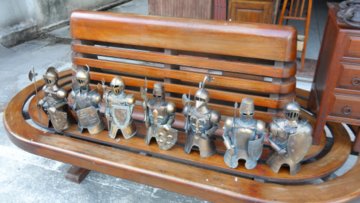

That’s ends our tour of the old markets in Nakhon Pathom. These old markets by the Tha Chin River are ideal for a day’s trip out of Bangkok to spend a quiet Saturday afternoon enjoying the serenity by the river. Table of contents Map to the old markets View Old markets in Nakhon Pathom in a larger map Location of the old markets Bang Luang Market Amphoe Bang Len Tha Na Market Amphoe Nakhon Chaisi Nakhon Pathom Opening hours Every day from 0800 – 1500 hours (can be extended at weekends) Admission is free How to get to there By car Bang Luang Market Cross the Chao Phraya at the Phra Pin Klao Bridge near Sanam Luang – Borommaratchachonani Road (highway 338) – Mahidol University at Salaya – Nakhon Pathom Road (highway 304) – highway 5032 – past the Wat Lam Phaya floating market – continue north on highway 3351 till you get to Tambon Bang Luang. Tha Na Market Borommaratchachonani Road (highway 338) – Mahidol University at Salaya – continue west to Petchkasem Road (highway 4) – turn right onto highway 4 – turn right again into highway 3094 and proceed straight onto the Tha Na Market. Table of contents Next month We visit the Nang Yai Museum at Wat Khanom, Ratchaburi If you enjoyed reading this e-zine, please forward it to a friend. If you received this from a friend and found it interesting, please subscribe at Bangkok Travelbug. What do you think of the Bangkok Travelbug? We love to hear from you What other subscribers have said Till next month then. Eric Lim Tour Bangkok Legacies Find us on Facebook Copyright@2008-2014 Tour Bangkok Legacies All rights reserved |
| Back to Back Issues Page |
